We Know What’s Wrong and How to Fix it By 2040
The overriding philosophy for optimizing healthcare for 2040 will be to shift to a system that prioritizes patients and preventive care to keep people healthier longer—while streamlining management and reducing waste. According to a study in the Journal of the American Medical Association, waste in the US healthcare system equals about 25% of the total spent—or around $1.2 trillion. If this waste were eliminated starting next year, the US would save over $20 trillion by 2040.
AN UNHEALTHY DEPENDENCY ON THE FEE-FOR-SERVICE MODELThis is Public Enemy No. 1—a system that incentivizes providers and caregivers to order as many tests and procedures as possible, and to charge often exorbitant rates for every Band-Aid, cholesterol test and surgery. Medicare and regulators have tried to tamp down costs and have made some reforms, but often they are thwarted by the lobbying of special interests. Private insurers often deny procedures and care, but frequently end up paying whatever providers charge and passing on the costs to policyholders and government. | OPTIMAL FIX BY 2040Change the current fee-for-service system to a value-based system that bundles costs into single charges for procedures and services and financially rewards payers, caregivers and providers for delivering quality care and optimal outcomes based on keeping people well. | |
PHARMA HAS A LICENSE TO PRINT MONEYThe incentives in the pharmaceutical industry are perhaps the most perverse. No doubt, the R&D for new drugs is expensive, which is why drug companies are allowed to hold exclusive long-term patents and generally charge whatever they want. Companies are incentivized to charge prices far in excess of costs, and to focus on meds that patients will take for years (for chronic conditions like diabetes or hypertension) rather than drugs like antibiotics and vaccines that are taken once or episodically. | OPTIMAL FIX BY 2040Create price ceilings for drugs and limit drug company profits, keeping them in line with non-pharma industry norms. | |
PRIVATE VS. PUBLICThose who defend the current system often claim that there is a stark choice between highly efficient private healthcare that is market-driven and bloated, and inefficient single-payer healthcare systems paid for with taxes and delivered by the government. This is a false choice. With government-enforced virtual monopolies for drug companies, there is no true free market. Evidence also suggests that Medicare and the US Department of Veterans Affairs offer more patient-centric care than the private sector. | OPTIMAL FIX BY 2040Ideally, the system would be more efficient and less bloated if all Americans had basic healthcare paid for by the Centers for Medicare and Medicaid Services. People would still be free to supplement this with private insurance, as they do in Germany and most other Western European insurance systems. | |
US Healthcare Delivery Is Highly Decentralized—Change Will Not Come EasilyCurrently there are more than 400 health systems with 6,000 hospitals and nearly 35,000 ambulatory care centers, all regulated by a mishmash of federal, state and local policies. Over 900 health insurance companies operate in the US, employing 560,000 people to manage 224 million covered Americans— a 1-to-400 ratio. Medicare and Medicaid employ roughly 6,000 workers to manage 64 million Americans—a 1-to-10,000 ratio. Changing this system to emphasize health and preventive care will be a herculean task. | OPTIMAL FIX BY 2040With a more centralized system styled after Medicare and Medicaid, all Americans would be insured by 2040 and much of the $260 billion in administrative waste (according to JAMA) would likely be reduced or eliminated. | |
DECENTRALIZED AND UNDERUTILIZED HEALTH DATAIn an era where our data is being collected and used all the time by advertisers and companies trying to sell us things, it’s astonishing that the healthcare system can’t collect and centralize health data that can follow us to wherever we need it to be. Electronic Medical Records are too often used to track payments to providers rather than to improve people’s health. Personal data collected on wearables and in tests, exams and checkups often isn’t used to track patients’ health or to inform treatments or for preventive care. | OPTIMAL FIX BY 2040As the technology for analyzing health data becomes more effective, doctors will be able to better predict future diseases. This will incentivize healthcare systems to compete based on the level of preventive care they provide. With these vast troves of data, we’ll also have a better understanding of which community-level interventions are most effective. A comprehensive system focused on keeping people well would save Americans trillions of dollars and bring costs more in line with other industrialized countries. | |
GEOGRAPHY AND INEQUALITY OF ACCESSRight now, hospitals often charge radically different prices for the same procedure or service even in the same city and from state to state. For instance, the same MRI scan can cost between $400 and $12,000 depending on a person’s provider or payer or the state they live in. Medicare and Medicaid have tried to standardize pricing, but the efforts have largely failed. The Affordable Care Act, launched in 2009, proved change was possible. In 2022 uninsured rates reached an all-time low of 8% from 15% pre-Obamacare. This impressive change still left 26 million Americans without health insurance. Minorities, the economically disadvantaged and those with chronic health conditions have the greatest challenge in getting affordable health insurance and in accessing care. | OPTIMAL FIX BY 2040Moves to standardize pricing for health services and procedures would remove a great deal of confusion and help alleviate the tens of billions of waste from overcharging each year. Making the 2009 Affordable Care Act (Obamacare) universal would ensure that all Americans are insured by 2040. |
